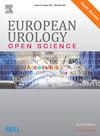采用纪念斯隆凯特琳癌症中心的nomogram来预测瑞典前列腺癌特异性死亡:一项基于人群的队列研究
IF 3.2
3区 医学
Q1 UROLOGY & NEPHROLOGY
引用次数: 0
摘要
背景与目的预后是前列腺癌临床治疗的基石。本研究旨在更新瑞典纪念斯隆-凯特琳癌症中心(MSKCC)的术前和术后nomogram前列腺癌特异性10年死亡率预测,并评估合并症的附加价值。方法进行队列研究,纳入2007-2020年瑞典国家前列腺癌登记处诊断为局限性前列腺癌的所有接受根治性前列腺切除术的男性。随访至2022年12月31日。我们使用病因特异性Cox比例风险模型来获得前列腺癌特异性死亡率和其他原因死亡率的累积发生率。在瑞典6个卫生保健地区对模型进行了判别性(一致性[C]指数)和内外部验证和自举校准(N = 500)验证。主要发现和局限性该队列包括3106名男性,其中629人死于前列腺癌,2415人死于其他原因,中位随访时间为8.3年(四分位数间距:5.2,11.8)。与前列腺癌特异性死亡率模型相比,共病对其他原因死亡率模型增加了更多的价值,并且被纳入所有模型。术前和术后模型对前列腺癌特异性死亡(乐观校正后的c指数分别为0.81和0.87)均显示出较高的判别性,但对其他原因死亡率(两种模型均为0.67)的判别性不高。所有模型都经过了很好的校准,在术前预测的累积发生率较高的范围内,有最小的高估,但在术后模型中没有。结论和临床意义更新后的MSKCC图在鉴别和校准方面表现良好,可用于瑞典的临床实践。在这项研究中,共病在预测前列腺癌特异性死亡率方面的预后价值微乎其微。建议在其他人群中应用外部验证。预后是前列腺癌临床治疗的基石。在这项研究中,我们采用了瑞典最好的预估风险分类系统,即纪念斯隆-凯特琳癌症中心的术前和术后nomographic,来预测前列腺癌特异性死亡。适应模型表现良好,可以直接应用于瑞典男性前列腺癌。本文章由计算机程序翻译,如有差异,请以英文原文为准。
Adaption of the Memorial Sloan Kettering Cancer Center Nomograms for the Prediction of Prostate Cancer–specific Death in Sweden: A Population-based Cohort Study
Background and objective
Prognostication is a cornerstone of the clinical management of prostate cancer. This study aims to update the pre- and postoperative Memorial Sloan Kettering Cancer Center (MSKCC) nomograms for the prediction of 10-yr prostate cancer–specific mortality in the competing risk setting in Sweden, and to evaluate the added value of comorbidities.
Methods
A cohort study was conducted including all men in the National Prostate Cancer Register of Sweden diagnosed with localised prostate cancer in 2007–2020, who underwent radical prostatectomy. Follow-up was until December 31, 2022. We used cause-specific Cox proportional hazard models to obtain the cumulative incidence of prostate cancer–specific and other-cause mortality. The models were validated in terms of discrimination (concordance [C] index) and calibration by internal-external validation in six Swedish health care regions and by bootstrapping (N = 500).
Key findings and limitations
The cohort included 31 106 men, of whom 629 died from prostate cancer and 2415 died from other causes during a median follow-up of 8.3 yr (interquartile range: 5.2, 11.8). Comorbidities added more value to the other-cause mortality model than to the prostate cancer–specific mortality model, and were included in all models. Both the preoperative and the postoperative model showed high discrimination for prostate cancer–specific death (optimism-corrected C-index: 0.81 and 0.87, respectively), but not for other-cause mortality (0.67, both models). All models were well calibrated, with minimal overestimation at the higher range of predicted cumulative incidences for the preoperative, but not for the postoperative, model.
Conclusions and clinical implications
The updated MSKCC nomograms performed well in terms of discrimination and calibration, and can be used in clinical practice in Sweden. In this study, comorbidity added minimal prognostic value for predicting prostate cancer–specific mortality. External validation is advised for application in other populations.
Patient summary
Prognostication is a cornerstone in the clinical management of prostate cancer. In this study, we adapted the best preforming risk classification system, the pre- and postoperative Memorial Sloan Kettering Cancer Center nomograms, for the prediction of prostate cancer–specific death in Swedish setting. The adapted models perform well and can be applied directly to Swedish men with prostate cancer.
求助全文
通过发布文献求助,成功后即可免费获取论文全文。
去求助
来源期刊

European Urology Open Science
UROLOGY & NEPHROLOGY-
CiteScore
3.40
自引率
4.00%
发文量
1183
审稿时长
49 days
 求助内容:
求助内容: 应助结果提醒方式:
应助结果提醒方式:


